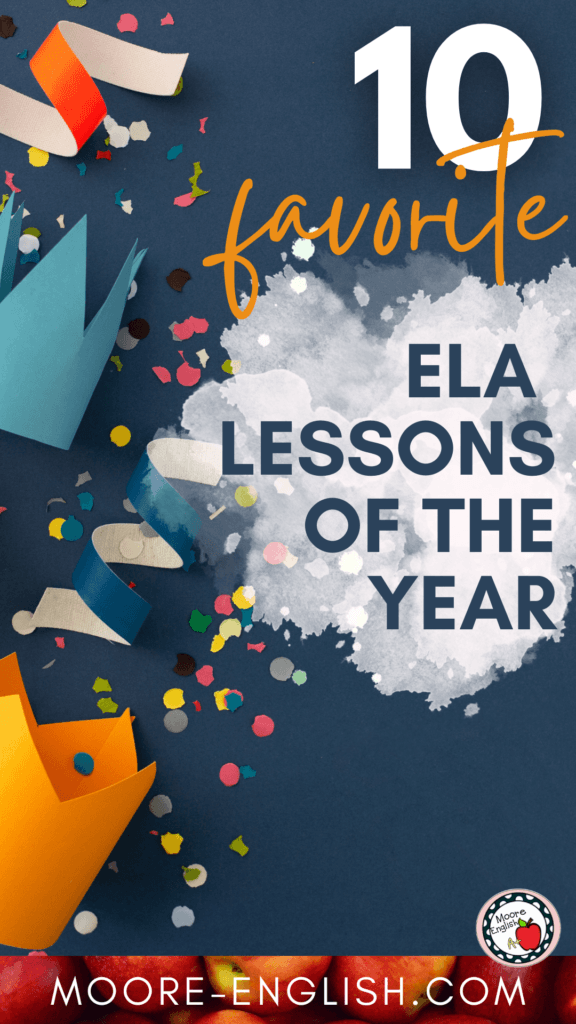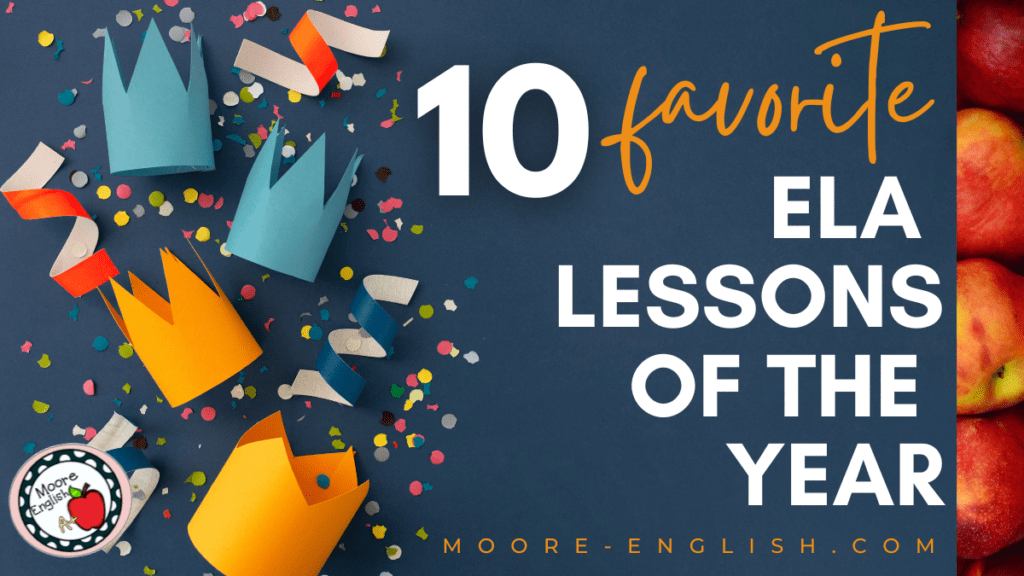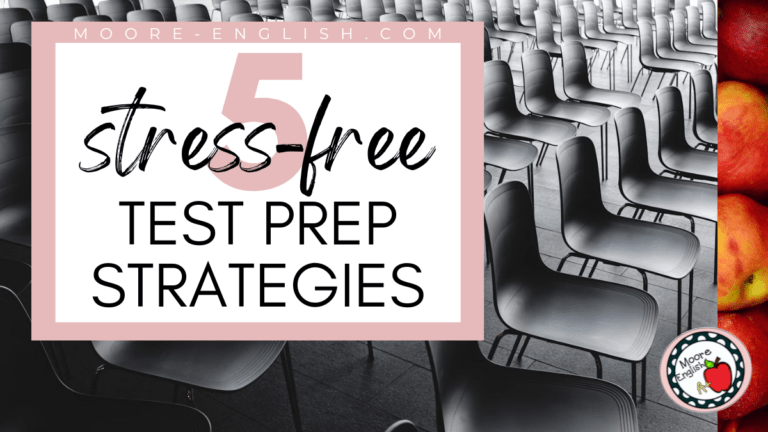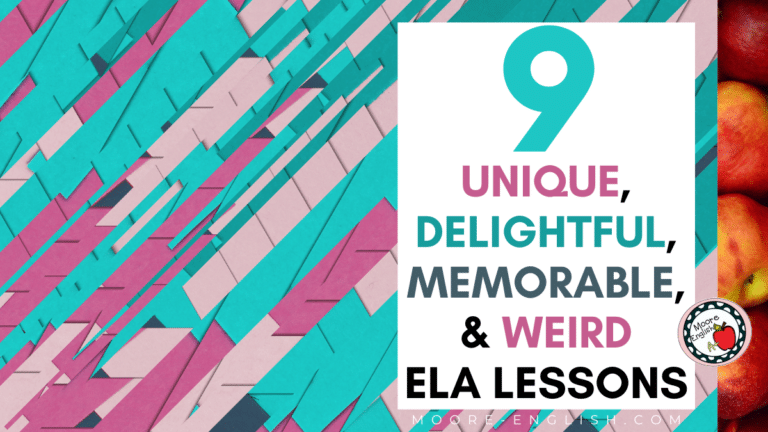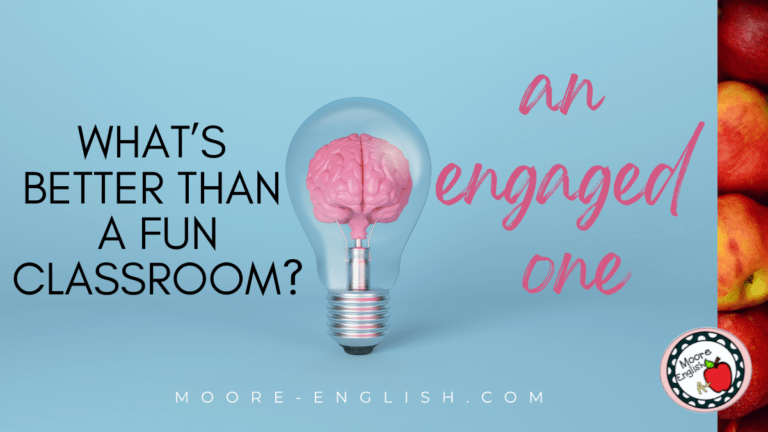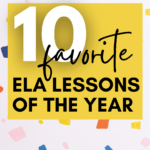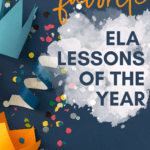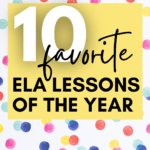The end of the year is such a powerful time for reflection, so I wanted to reflect by sharing my 10 favorite language arts lessons of the year! To do this, I chose one lesson that I loved from each month of the school year! I’m going to start with August-December 2023 and then circle back around to January-May.
Putting all of these lessons together was such a fun way to reflect on a year of instruction. In teaching, it can be so easy to get stuck on what lessons flopped, but going through this process was a powerful reminder of everything that worked!
This post this post may contain affiliate links. Please read the Terms of Use.
Favorite Language Arts Lessons for Back to School
In so many ways, back-to-school seems impossibly near and incredibly far. That’s just one of many paradoxes of being a teacher. Reflecting on the year, these were my two favorite lessons from the start of the semester:
- August: In the first few weeks of school, I always take my students to the library for a book tasting. At the end, students check out a book. The next day, I will give students a fair amount of class time to begin reading. Then, students complete a First Impressions Book Review. This becomes almost like a second book tasting as students exchange reviews and read their classmates’ first impressions!
- September: As we dig into early content, “Credo” by Neil Gaiman is one of my favorite lessons. This text usually appears shortly after I have introduced parallelism, and it makes a perfect opportunity to analyze parallel structure in context. Plus, the speech has an incredible message that resonates with students.
First Semester Favorites
As first semester continues, students begin to tackle more complex content. They also work toward more independent tasks. That transformation to more independence is a theme in my favorite language arts lessons!
- October: Just in time for spooky season, I love to read “Berenice” with my students. Usually, students have already read several of Poe’s more famous poems and short stories before they come to me. That’s one of the reasons I choose “Berenice.” Watching students’ faces as they figure out the twist is priceless!
- November and December: Throughout the year, students have independent reading time. By this point in the semester, students are usually finishing their books and/or have moved on to their second or third title. To help students analyze their independent reading books, we complete Literary Analysis Stations in November. Sometimes this takes two days, but it’s a great way for students to process their own text and to evaluate it from multiple angles. Similarly, in December we take our stations work and use it to create complete the Book Cover Design Project. At the end of the semester, a project like this is the perfect way to wrap everything up without a stressful test.
Winter Favorites
When students come back from winter break, it’s time to dive into poetry! This progression of activities reflects my love of teaching poetry. It also shows how much progress students make with poetry in a relatively short time!
- January: During the first week back from break, it’s important to review key concepts and get back in the swing of things. The tone game is one of my absolute favorites! It’s kind of like a school-appropriate version of Apples to Apples.
- February: For my juniors, this time of the year really sees them moving through different literary movements. In particular, this month is all about Romanticism. By the end of the unit, students have conquered “Thanatopsis.” When students first see this poem, they are shocked by it’s length. So when students finish this lesson, they feel a true sense of accomplishment that I love to see!
- March: As students move to Realism, we read “War is Kind.” I know that this is a weird poem to enjoy. However, it is a true test of how well students understand tone and irony. One of the differences between immature and mature readers is their understanding of verbal irony, and this poem really tests that. Watching students approach verbal irony as something other than sarcasm is powerful!
End-of-Year Favorites
As the year wraps up, my juniors are wrapping up their survey of American literature. When this happens, it’s time to turn our attention to Modernism. In April, I enjoy watching students synthesize “Musee des Beaux Arts” and “Landscape with the Fall of Icarus.” As we work through these poems, I ask students to reflect on their skill with poetry. Could they have tackled this synthesis in August? Probably not. But are they synthesizing like a boss now? Absolutely! That transformation is one of my favorite language arts lessons!
Finally, in May, I like to choose a poem to lead students into summer vacation. For this reason, I love teaching “The Summer Day” by Mary Oliver. Is there a more powerful closing line in all of literature? Plus, I enjoy showing this video so students can see a visual interpretation of the poem.
Reflecting on My Favorite Language Arts Lessons
Looking back on my favorite language arts lessons of the year, some key themes emerge. First, teaching poetry is clearly my jam. However, more importantly, most of the lessons I love capture student growth! They are favorite language arts lessons that emphasize student growth. They are moments when students see the world or a text from a different perspective. Those are the best moments in teaching literature!
Since I was limited to only ten lessons, I didn’t get to capture every moment of the year. So I wanted to share these bonus favorite language arts lessons:
- Reading “Editha” and “Girl”
- Acting out a play with the students!
- Introducing Literary Criticism (perhaps with Taylor Swift)

